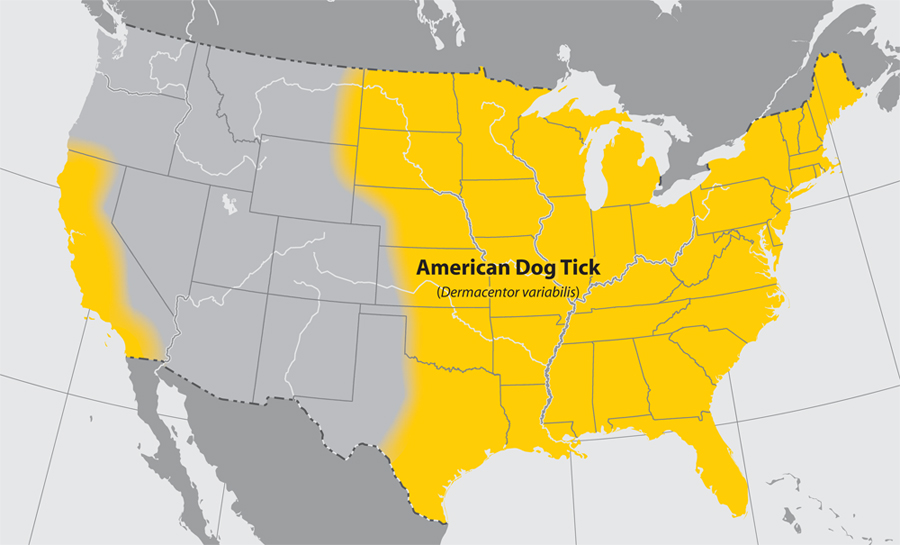Main Content

Dog owners know that keeping their canine friends protected from pests such as ticks is very important in preventing serious diseases. While Lyme disease is the most well known, there are other tick-borne diseases owners should watch for. One of the deadliest in the Americas is Rocky Mountain spotted fever (RMSF). This is a bacterial disease spread through the bite of an infected tick. If left untreated, RMSF can be deadly.
Several species of ticks can carry the disease including the American dog tick, the Rocky Mountain wood tick, and the brown dog tick. In New Jersey, the most common tick culprit is the American dog tick which has a territory spanning the eastern half of the US. Wooded areas are a prime spot for ticks so take care when letting your dog run through tall grasses and woods. Ticks are more prevalent between March and October, but owners should still be cautious until the first significant freeze of the season.
If you suspect you or your dog were bitten by a tick, watch for these symptoms and contact a healthcare provider. Common symptoms in humans include fever, headache, rash, nausea, vomiting stomach pain, muscle pain, and lack of appetite. Dogs display similar symptoms including poor appetite, non-specific joint/muscle pain, fever, coughing, vomiting, diarrhea, swelling of the face or legs, or depression. In severe cases, bleeding may occur in the gums, eyes, or nose. Neurological signs such as wobbling when walking or hypersensitivity can also be a symptom of RMSF. For both humans and dogs, a blood test will determine whether or not the symptoms are caused by RMSF. Once a diagnosis of RMSF has been confirmed, the patient will receive a course of antibiotics for 7 to 21 days, depending on the medicine. Early detection and treatment will most likely have an excellent prognosis. Delayed treatment could be life threatening.
So how can you protect your dog (and yourself) from RMSF? Make sure your dog takes their tick preventative medication regularly throughout the year. Don’t assume that it is safe during the winter months and skip treatments. It is better for your dog to be protected at all times in case tick season starts early or ends late. Check with your veterinarian to find a tick preventative medication that is best for your dog. Some breeds are more sensitive to certain types of medication. Keep your dog from wandering through long grass or wooded areas as these are the perfect hiding spots for ticks. If this happens, make sure you check your dog thoroughly for ticks before heading inside. Ticks like to hide in warm places – like between the leg and torso. Don’t forget to check between your dog’s toes!
If you do encounter a tick that has already bitten your dog, take the proper precautions when removing it. Wear disposable gloves when handling the tick to avoid getting the infected saliva on your hands. Use fine tweezers to grasp the tick as close to your dog’s skin as possible and firmly pull it straight out. Be careful not to twist when pulling the tick so the mouth parts do not break off. For more information about ticks and how to remove them, visit the American Kennel Club (AKC) website. To learn more about Rocky Mountain Spotted Fever, visit the Centers for Disease Control and Prevention.
By Kelly Dziak, 4-H Program Associate, Rutgers Cooperative Extension & Laura Eppinger, County 4-H Agent, Rutgers Cooperative Extension